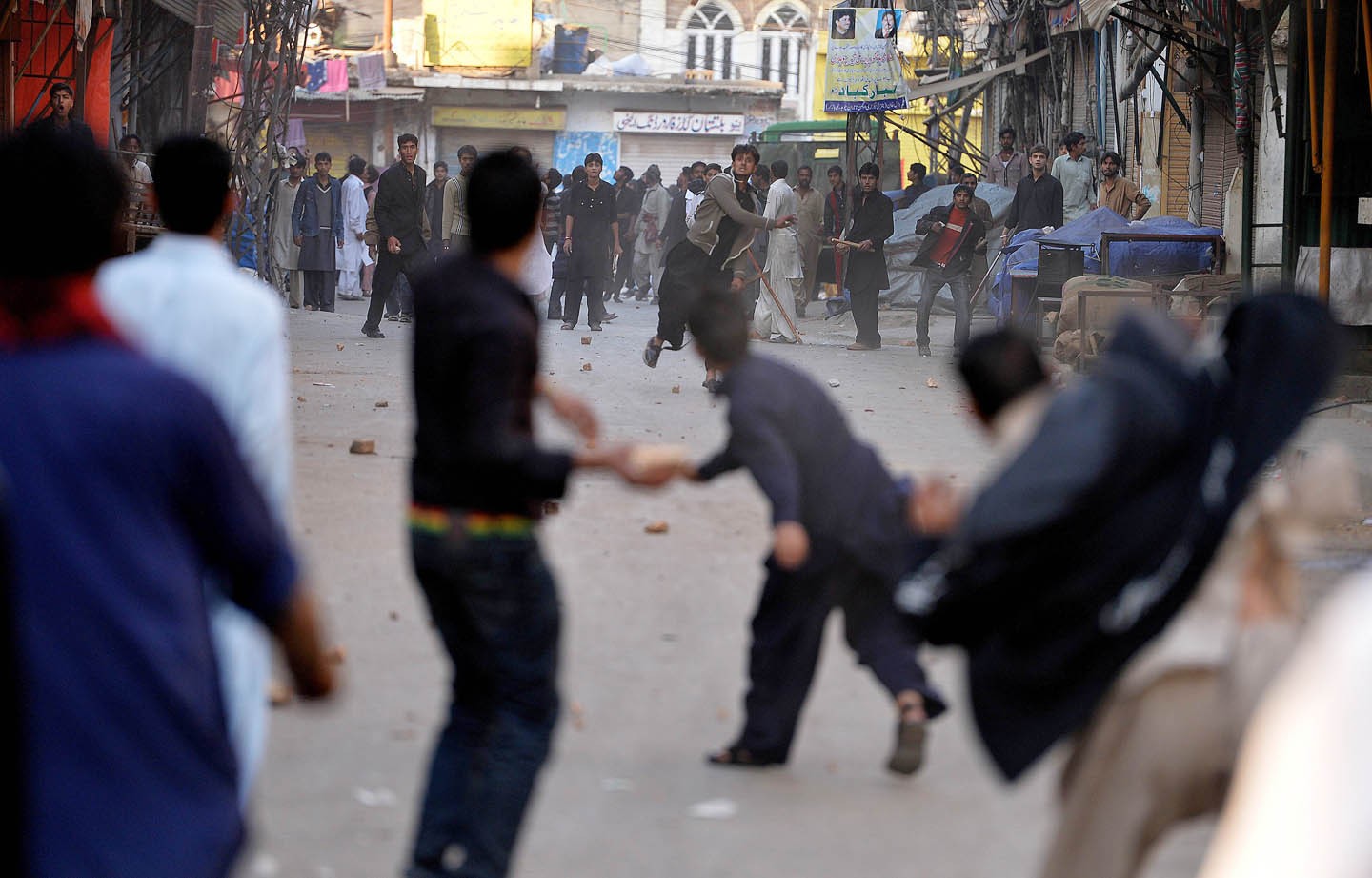

There is very little media coverage of the violence which took place in Rawalpindi. All the media outlets without any exception, including BBC Urdu, decided to act with restraint and not share footage of violence and carnage. This self-censorship was wisely put in place so as to ensure that violence does not spread at a mass level. Still, it did spread to some other cities as Multan, Chishtian and Bahawalnagar. If there had been an irresponsible coverage of this violence, the spread could have been far beyond control.
But why couldn’t media report this issue without there being catastrophic outcome of such coverage? I argue that the narrative about such themes as sectarianism and sectarian violence is inherently flawed. The terms of reference used for explaining these events are directly borrowed from the colonial language of control dating back to the 19th century. In his excellent article titled "The Colonial Construction of the Indian Past", Gyan Pandey compared the colonial account of a ‘riot’ during Muharram in Mubarakpur with a vernacular account for the same event.
The official colonial narrative centred upon such themes as irreconcilability of Hindus and Muslims (or Sunnis and Shias), prevalence of passion over rational self during Muharram and the anxieties of violence from an administrative point of view.
By establishing a direct correlation between the hostilities of the past and the outbreak of violence, this narrative forecloses the possibilities of an enduring co-existence between communities. With such co-existence deemed as a historical impossibility, it set the parameters for emphasising the centrality of the colonial rule as a stabilising force which ensured law and order and treated all religious communities with equality.
The vernacular account, on the other hand, did not focus on threat posed to the colonial state by such incidents of violence but the disruption caused in the community and social relations existing between members of different religious persuasions. In such an account, the idea of space carried a certain degree of emotional attachment and not just an arena on which conflict between Hindus and Muslims was played out.
The colonial administrative narrative situated within the parameters of law and order, subversion caused by miscreants and religious passions continues to resonate with our present understandings about acts of violence. In this narrative, violence is explained as an outburst of irrational frenzy carried out between two essentialized and definite groups. These groups in this particular incident are Shias and Sunnis who carry a historical baggage of rivalry of 1400 years. There has to be a trigger so as to make this story logical and conclusive. The search for trigger helps establish the onus for provocation and hence the ensuing violence.
If the violence of 10th Muharram in Rawalpindi is to be understood within the parameters of ‘provocation’, ‘Shia procession’ and ‘Sunni mosque’, there cannot be a judicial enquiry or media coverage along the colonial understanding of rule of law which does not lead to further violence.
So what is the possible alternative to the inadequacy of language and terms of reference established by colonial discourse to describe this violence? Some historians have tried to look for alternatives. The Marxist approach was to look for economic causes for disaffection which fed into mobs masquerading behind religion and indulging in violence. If this approach is to be followed, a future historian could simply write about the violence which took place in Rawalpindi on 10th Muharram as a consequence of rising fuel prices in the country.
On the other hand, the subaltern approach is more useful as it does not seek simplistic correlation between an economically disaffected mob and acts of violence. Alternatively, it seeks explanations within the dynamics of community concerns and politics.
Regardless of what approach is adopted, the real challenge remains to wriggle out of the terms of reference which have long been used as an explanatory model for understanding ‘sectarian conflict’ using specific terminologies, concepts and categories. Of course it will not be easy to develop an alternative narrative to explain violence. So, at this stage, one can at least raise some pertinent questions: In what sense were all those who were part of the Muharram procession Shias? Was being Shia the most important thing for them at that very moment or were other ethnic, economic, biradri related considerations also important? Was this violence simply a by-product of 1400 years of rivalry and conflict existing between Shias and Sunnis, or the radicalisation of 1980s, or a consequence of the pent up emotions due to excessive Shia killings across the country in the last one year alone? Were the people on both sides angry because of rising petrol prices? Was it a reflection of a class struggle gone wrong and expressed in sectarian terms rather than economic? What makes a man lynch another person to death in a gruesome manner?
These set of questions are surely different from the ones which the judicial commission would ask. The commission would like to know about prior intelligence reports on the possibility of planned sectarian violence, the deployment of police forces along the route of the procession, the inadequacy of response given by the security forces and so on.
So in order to recultivate social relations between communities, there has to be a non-judicial commission as well, drawn from a group of scholars from such diverse fields as history, sociology, and literature. They will not work towards seeking definite answers but in exploring the meanings of violence which took place in Rawalpindi on the 10th of Muharram.